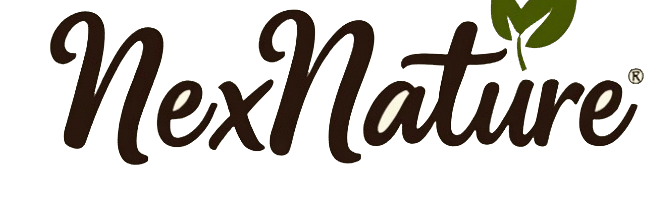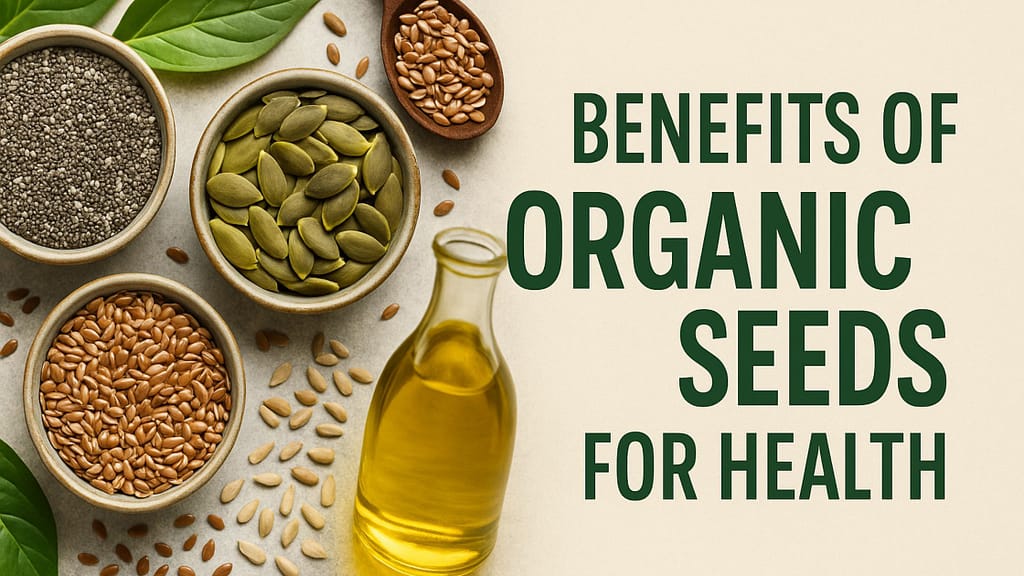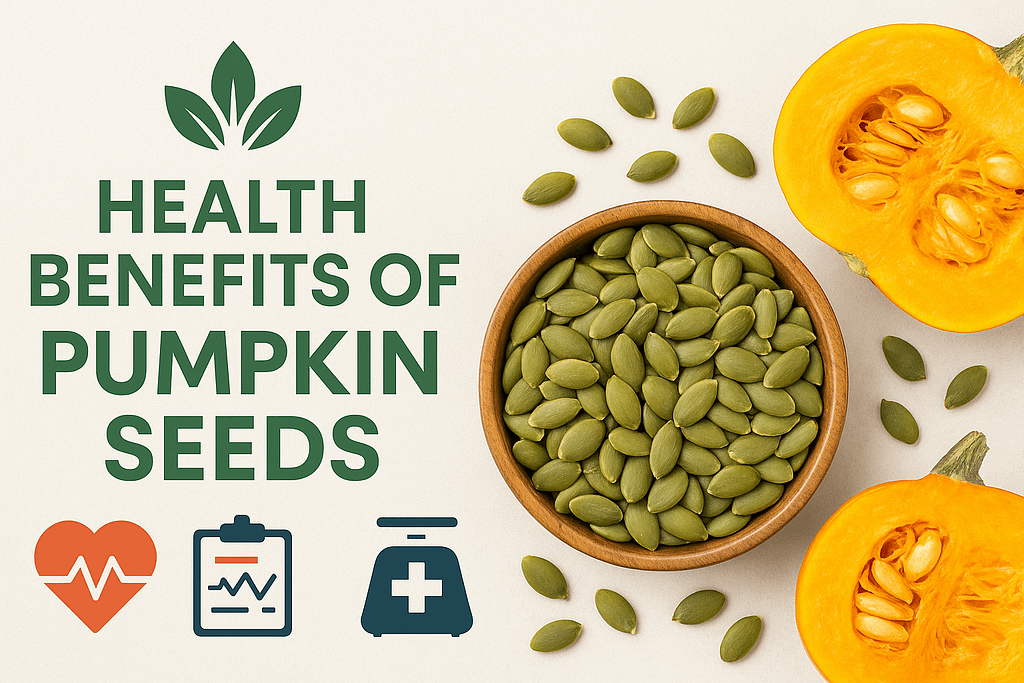Introduction
When you think that true beauty begins at the heart, then you are going to like what I am about to tell you. Seeds may be small, but they have an amazing nutritional value that can revive your c, and improve all your wellness in a way that even costly creams and treatments cannot compete with.
Here, we will discuss the top seeds that support the skin, hair and wellness, including how these seeds are so effective, which provide the greatest benefits and how to use these seeds in order to achieve the most. At the end, you will have the entire roadmap on how to integrate these natural energy sources into your daily life.
Why Seeds Are Beauty and Wellness Superstars
Seeds are packed nutrition which acts on the inside. Herein lies the secret of their effectiveness to skin, hair and general health:
The omega-3 and omega-6 are essential fatty acids which are important in keeping your skin hydrated and to curb inflammation which causes breakouts or an early onset of age.
The building blocks that are required by your hair follicles to make healthy, strong strands are complete proteins and amino acids.
Vitamins and minerals such as vitamin E, B-complex vitamins, zinc, selenium, and magnesium help in repair of the skin, collagen synthesis and scalp.
Free radical damage caused by pollution, UV light and daily stress is combated by antioxidants and polyphenols.
Fiber helps the gut stay healthy and a healthy stomach system usually shows up on healthier skin that is clearer and much radiant.
As it was researched, the regular consumption of chia seeds contributes to the skin hydration and decreases inflammation and supports the natural barrier mechanism of the skin. It has also been clinically shown that pumpkin seed oil, when used as a supplement can greatly increase the growth of hair.
The Top Seeds for Skin, Hair & Wellness
I would like to guide you through the most efficient seeds that you would consider to add to your routine:
Flaxseeds – The Omega-3 Powerhouse
Flaxseeds contain alpha-linolenic acid (ALA), also known as an omega-3 fatty acid, which is of plant origin and acts to dampen skin dryness and maintain healthy hair follicles. The antioxidants in flaxseeds are also due to the lignans.
Usage: Flaxseeds can be grained fresh and put in smoothies, oatmeal, or yogurt. Flax water can also be prepared by placing the seeds in water overnight and then drinking the gel-like substance.
Caveats/tips: It should be ground in order to be absorbed; put in fridge after grounding so it does not oxidize. Excess can influence digestion in case there is a sudden increase in the amount of fiber.
Chia Seeds – The Hydration Heroes
The chia seeds are effective in skin moisturization due to the presence of omega-3 and the fact that the seed absorbs water. They create a gel-like consistency which is able to sustain the amount of moisture both internally and when applying topically.
Usage: Hydration: Add to water or plant milk to make chia pudding or blend in smoothies or use the soaked gel as an ingredient in a face mask as a hydrant.
Caveats/tips: They retain a lot of water – hydrate well; some individuals may get bloated when adding large amounts of them quickly.
Pumpkin Seeds – The Hair Growth Champions
Pumpkin seeds contain zinc, vitamin E, and omega-6 fatty acids which are especially advantageous to the scalp and hair growth. A study established that in a case of 24 weeks, men who were given pumpkin seed oil supplements had considerable growth improvement in their hair.
Usage: Roast them and use them as a snack, put them raw into salads, or use a pumpkin seed oil under the supervision of the specialist.
Cautions/ hints: Oil form moderation; not everyone likes strong flavour; make sure that the oil is of good quality; unrefined oil.
Sunflower Seeds – The Skin Protectors
Sunflower seeds contain a lot of vitamin E and selenium, which will protect the skin against UV damage and healthy blood circulation to the scalp.
How to consume: Add as trail mix, prepare sunflower seed butter, or sprinkle on salads and grain bowls.
Caveats/tips: Can contain too much omega-6 so eat together with omega-3 seeds (such as flax, chia).
Hemp Seeds – The Complete Protein Source
Hemp seeds are a complete protein as they contain all the essential amino acids. They also provide perfect proportion of omega-3 to omega-6 fatty acids to support skin barriers and hair strength.
How to use: Add to smoothies, sprinkle on yogurt or apply hemp seed oil to the skin and hair.
Caveats/tricks: Oil rancidifies quickly; refrigeration slows this; untoasted hemp seeds may have an earthy flavour.
Sesame Seeds – The Anti-Aging Allies
Sesame seeds of all colors and sesame seeds, in particular, contain lignan, calcium, and magnesium. Black sesame seeds contain some of the highest antioxidants which could possibly preserve skin elasticity and hair pigment.
Uses: Toast with butter to have a nice chew, tahini or use in seed cycling routines (see below).
Cautions/suggestions: Toasting enhances flavour but some vitamins are heat sensitive, and some people are allergic.
Fenugreek Seeds – The Scalp Soothers
Being a great source of protein and iron, the fenugreek seeds are traditional cures of volume and health of hair and the scalp. They are also anti-inflammatory and they can be used to treat acne.
Use: You can drink this water overnight or grind it into a paste to use as a hair mask.
Cautions/hacks: Bitter flavor; the seeds should be moistened to prevent bitterness; can work with some drugs–ask doctor.
Understanding Seed Oils vs. Whole Seeds
A very big difference exists between applying whole seeds and applying seed oils to the skin:
The internal gains of benefits Dietary use are systemic – the skin, hair and general wellness is enhanced internally as a result of regular nutrition.
High-quality cold-pressed seed oils have the potential to benefit the skin and scalp directly and are useful in hydration, inflammation, and addressing specific issues.
To apply topically, it is always best to use cold-pressed and unrefined oils and test the patch test before applying to any more extensive parts. Quality is important – bad oils may bring harm instead of good.
Seed Cycling for Hormonal Balance
Seed cycling is an eating habit whereby you consume a particular seed in certain stages of your menstrual cycle to promote hormonal balance, which in turn has a beneficial effect on the skin and hair.
Follicular phase (days 1-14): Pay attention to flaxseeds and pumpkin seeds that can help to maintain the balance of estrogens.
Luteal stage (15-28 days): Replace the sunflower and the sesame seeds, which is likely to promote progesterone synthesis.
Although scientific data are scarce, a significant number of individuals have reported the improvement of PMS symptoms, skin condition, and hair with regular seed cycling. In case you are trying it, take 1-2 beans of ground seeds every day, and allow it to go through at least 2-3 cycles before you see any possible changes.
Practical Ways to Use Seeds Daily
Getting into the habit of seeds does not need to be difficult. The following are practical and easy ways:
Morning power: Add 1 tablespoon of ground flax and chia to your smoothie or oatmeal.
Snack smart: Keep a combination of secret mixture roasted pumpkin and sunflower seeds to give you an afternoon boost.
Home made hair mask: Blend the ground fenugreek with a small amount of coconut oil and a couple of drops of black seed oil to create a conditioning treatment to the head.
Hydrating facial care: Add soaked chia gel and honey to make a protein-enriching mask.
Evening ritual: Sprinkle hemp seeds on salads or grain bowls to get full protein and healthy fats.
How Much and How Often
To maximize the benefits of the seeds on the skin, hair and wellness:
- Per day: 1-2 tablespoons (10-20g) of mixed seeds are recommended.
- Topical oils: 2-3 times/week, or smear application of gentle oils daily.
- Consistency is important: It should be expected that results are achieved after 4-8 weeks of consistent use.
- Hair growth: Can take 3-6 months before length or thickness changes are noticed.
Safety and Quality Considerations
Seeds are mostly safe but remember the following facts:
To prevent digestive upsets, begin using the high-fiber foods slowly, when you are not accustomed to them.
Select quality – cold-pressed oils and fresh, carefully stored seeds are the best.
Monitor allergies – sesame is a popular allergen, and not everyone can remain indifferent to other seeds.
Store well – refrigerate seeds and oils, store ground seeds and opened oils in cool dark places.
Common Myths About Seeds
I would like to clear up some misunderstandings:
Myth: Consisting of seeds will yield instant outcomes. Reality: Weeks to months of constant use is required to see results.
Myth: the more seed oil the more results are guaranteed. Reality: It is the quality and right quantity that counts and not quantity. Too much oil can clog pores.
Myth: Seed cycling is a treatment of hormonal disorders. Reality: It can assist with small disparities but cannot substitute medical care of such conditions as PCOS.
FAQs
How long until I see results in my skin and hair? With consistent use, you may notice skin hydration and glow improvements within 4-8 weeks. Hair changes typically take 3-6 months since hair grows slowly.
Which seed is best for glowing skin? Chia, flax, and hemp seeds are excellent choices due to their omega-3 content, antioxidants, and skin-supporting nutrients.
Can I use seeds if I have acne-prone skin? Yes, many seeds have anti-inflammatory properties. However, patch test oils before topical use and focus on dietary consumption initially.
Is seed cycling scientifically proven? Research is limited, but many people report positive effects. It’s generally safe to try alongside a balanced diet and healthy lifestyle.
How should I store seeds and seed oils? Keep seeds in airtight containers in cool, dark places. Refrigerate ground seeds and opened oils to prevent rancidity.
The Bottom Line
Planting the most suitable seeds to achieve your skin, hair and wellness objectives into your everyday life is one of the most natural and approachable methods of contributing to your beauty objectives internally. These small nutrient-rich hopes offer the necessary fatty acids, proteins, vitamins and minerals that cannot be imitated by costly treatments.
Remember, consistency is key. Select 2-3 seeds that you like the most and promised yourself to use them at least two or three months. You sprinkled your breakfast with hemp seeds, seed cycled, or made your own masks with seed oils, you are giving your body the ingredients it requires to build beautiful lasting, natural skins and faces.
Ready to get started? Select one or two of the seeds listed on this guide and start using them every day this week. Your skin, hair and well being will be happy to make such an easy yet effective change.



